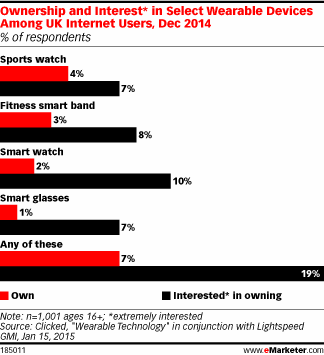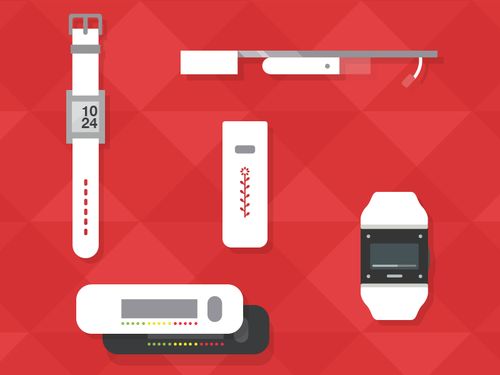The usage of wearables is not totally new to the golf industry. Those who were lucky to be in the Ryder Cup were able to experience the advantages of Radio Frequency Identification (RFID). This is why I was thinking over how could pro-shops and other golf retail outlets could utilize wearables.
For many of us, if I ask them about wearables, the following things are coming to their mind: Google Glass, smartwatches (e.g. Motoactv of Motorola), activity trackers (e.g. Fitbit). In 2014 there were more searches in Google for wearable devices than for fitness apps.
Why don’t we think how could we maximize these technologies to enhance customer experience in our pro-shop or golf retail outlet?
At this moment I can see 3 major areas where wearable technologies could be utilized:
Providing more product information
Brick-and-mortar companies have to compete with online retailers. Needless to say that online it is easier to obtain relevant information (+reviews) about products and services and compare them. Some retailers are already using QR codes to provide extra product information, such as Best Buy in the US, adding QR codes to the fact tags.
Our challenge is to find out how to utilize wearable technologies to provide personalized offers and solutions in real-time. Customers today are expecting more and more relevant offers, greater access to deals and promotions and fast check-out (I will talk about payment solutions later). More importantly, once the customer walks in, the store can immediately engage him or her with service.
If the customer opts to provide personal information via wearable, this can provide retailers further opportunity for marketing. I would not neglect the demand generation capability of wearables. Burberry’s solution, launched in 2013 (see video below), is a good example where the company embedded in its products a textile RFID (Radio Frequency Identification) label. This way Burberry was able to provide bespoke multimedia content specific to certain products.
Other interesting aspect is, how our sales team is communicating with customers in the pro-shop. We should think how we can support their work with extra information via wearable devices (= ongoing communication; e.g. remind the shop assistant that he is facing a loyal customer + what is the customers’ brand preferences, shoe size, preferred payment solution etc.). We could also avoid to use such embarrassing situation when the colleague is called to a certain place within the golf club via loudspeaker. In addition to this wearable can improve employee efficiency, enhance training and reduce nonproductive time.
Update: Shangri-La Hotels announced the introduction of Samsung Gear VR headsets across all global sales offices. The hotel group has produced immersive VR videos for over a quarter of their 94 hotels and resorts. Their intention is to give better understanding to their prospects of the Shangri-La product and experience.
The Container Store (TCS) for instance in 2014 replaced its walkie-talkie system with Theatro Wearable (a wearable in-store communications device clipped to employees’ shirts) to improve the communication among its workers.
To succeed we must integrate the implemented wearable solutions with our point of sale (POS), ERP, CRM, order management system (OMS), campaign management system and web content management system. For the integration we will have to write an application programming interfaces (APIs). I am less worried about security and privacy since our employees are used to being monitored.
In my next posts I will write about store communication and payment solutions.


